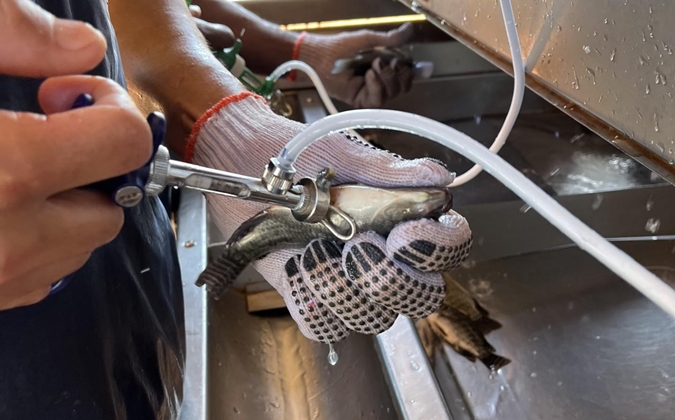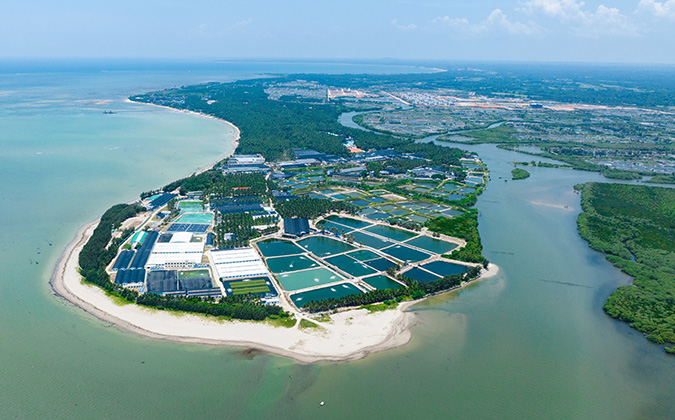
Better net-cleaning tech needed to contain harmful particles on fish farms — study
Cleaning the nets of pens on fish farms at sea releases millions of harmful biofouling particles that not only spread between pens but into other farms up to 5 kilometers away too, a study in Norway has revealed. But despite the concerning results, help is at hand for producers.
The risks of net cleaning
Biofouling, the unwelcome build-up of microorganisms, plants, algae and animals on submerged surfaces, including net pens, presents a costly clean-up task for fish farmers. A health risk to farmed fish, biofouling reduces oxygen levels for livestock, blocks the flow of waste from pens and is a source of diseases.
Studies confirm that cleaning nets to remove biofouling also carries health risks to fish, however. A common biofouling organism in Norway is the cnidarian hydroid, Ectopleura larynx. Net cleaning with standard high-pressure water jets breaks this marine invertebrate up into tiny particles that can harm fish gills and welfare. One cleaning session can release 70 million particles that may also carry and spread pathogens.
Spreading problems?
This new study from SINTEF Ocean (Norway) is the first to show how ocean currents disperse these particles from pens to surrounding areas.
The researchers took data on the behavior of cnidarian particles (e.g., their sinking rate) and ocean currents in the study region of mid-Norway. Using a computer model, they simulated the particles’ spread from two salmon farms.
The results revealed risks to the farm itself. Particles from one pen drifted into adjacent pens, sometimes within 30 minutes after net cleaning began. In addition, currents would return particles to the farm after initially dispersing them away.
The simulations also showed that particles drift into neighboring farms, traveling up to 5.5 kilometers (3.4 miles). Most (70%) of Norway’s 650+ salmon farms have other farms within this radius. The researchers also warn that these particles could harm passing wild fish.
The study team calculated that each net-cleaning event exposes fish to concentrations of cnidarian particles that are up to 41 times greater than normal concentrations, and for up to 30.5 hours. In farms with active disease outbreaks, the particles may undo farmers’ work to sterilize equipment or quarantine fish, the study further noted.
Promising options to contain risks
These results reinforce the need for new technologies to manage biofouling on fish farms. The shipping industry, which also contends with biofouling, offers some solutions here.
One of the most promising methods is a “clean and capture” approach, increasingly used to clean boat hulls as it prevents waste, antifouling chemicals and non-native species from entering the seawater.
Another is regular “grooming” of nets. This prevents build-up of biofouling beyond early stages of development. Also used in shipping, grooming involves mechanically cleaning surfaces — some of which have low-friction coatings.
The benefits of these shipping-derived technologies for aquaculture have been apparent for some time. And, fortunately, the first of these products for the aquaculture industry are now on the market.
Closed-containment farming systems, which keep fish in containers, may also offer a solution, the scientists said. These are currently being trialed by Norwegian salmon farmers.
The findings are “particularly relevant given the global trend of an increase in the size and biomass production of individual farms,” the researchers stressed.
“[This] translates into an associated increase in the quantity of material released via pen-net cleaning and the concentrations of harmful particles [that] downstream farms and natural ecosystems are exposed to.”
You can read the full journal article in Science of the Total Environment.
Posted on: June 26, 2024






